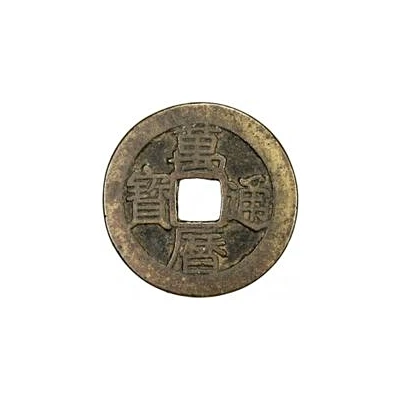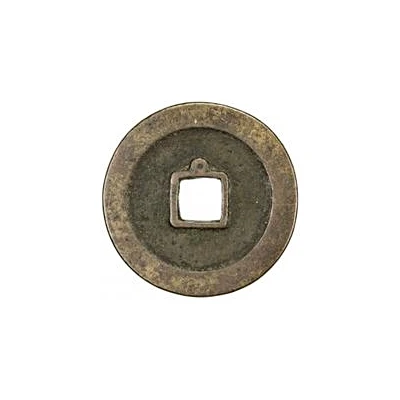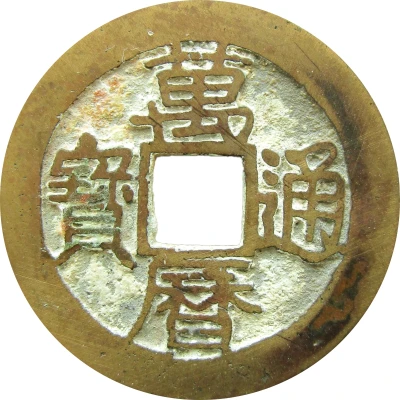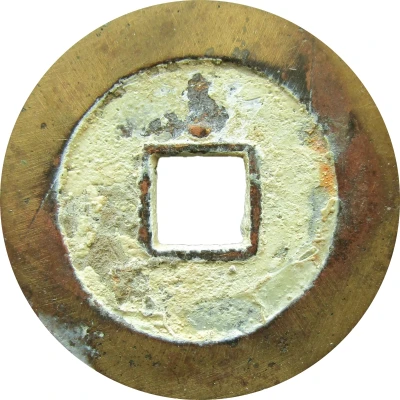


© Stephen Album Rare Coins
1 Cash - Wanli Tongbao; with circle ND
| Brass | 3.53 g | 24 mm |
| Issuer | Empire of China |
|---|---|
| Emperor | Ming dynasty › Wanli (明神宗) (1572-1620) |
| Type | Standard circulation coin |
| Years | 1576-1620 |
| Value | 1 Cash |
| Currency | Cash (621-1912) |
| Composition | Brass |
| Weight | 3.53 g |
| Diameter | 24 mm |
| Shape | Round with a square hole |
| Technique | Cast |
| Orientation | Medal alignment ↑↑ |
| Demonetized | Yes |
| Updated | 2024-10-04 |
| Numista | N#222134 |
|---|---|
| Rarity index | 94% |
Reverse
Circle at various locations.
Edge
Plain
Comment
While casting was stopped at the last emperor's death in 1572, it was resumed again in 1576 at the Peking and Nanking mints. Soon after, mints in Yunnan, Shanxi, Shandong, Henan, Shaanxi, Jiangxi, Fujian, and Huguang were also opened. However, due to poor circumstances, the Wanli coins were a failure, and by 1582, all mints except for Huguang closed. There was an attempt to open mints in 1599, including opening a Board of Works in Nanking, although so many coins were produced there that casting was cut back, and other mints were closed.Interesting fact
One interesting fact about the Wanli Tongbao coin is that it was produced during a time of great economic growth and cultural flourishing in China, known as the "Prosperous Age of Wanli" (1578-1620). This period saw significant advancements in agriculture, industry, and trade, which led to an increase in the production of coins like the Wanli Tongbao. The coin's design, featuring a circle and a square, symbolized the harmony between heaven and earth, and the unity of the people and the government. Despite its small size and relatively low value, the Wanli Tongbao coin played an important role in facilitating economic transactions and promoting cultural exchange during this time.

